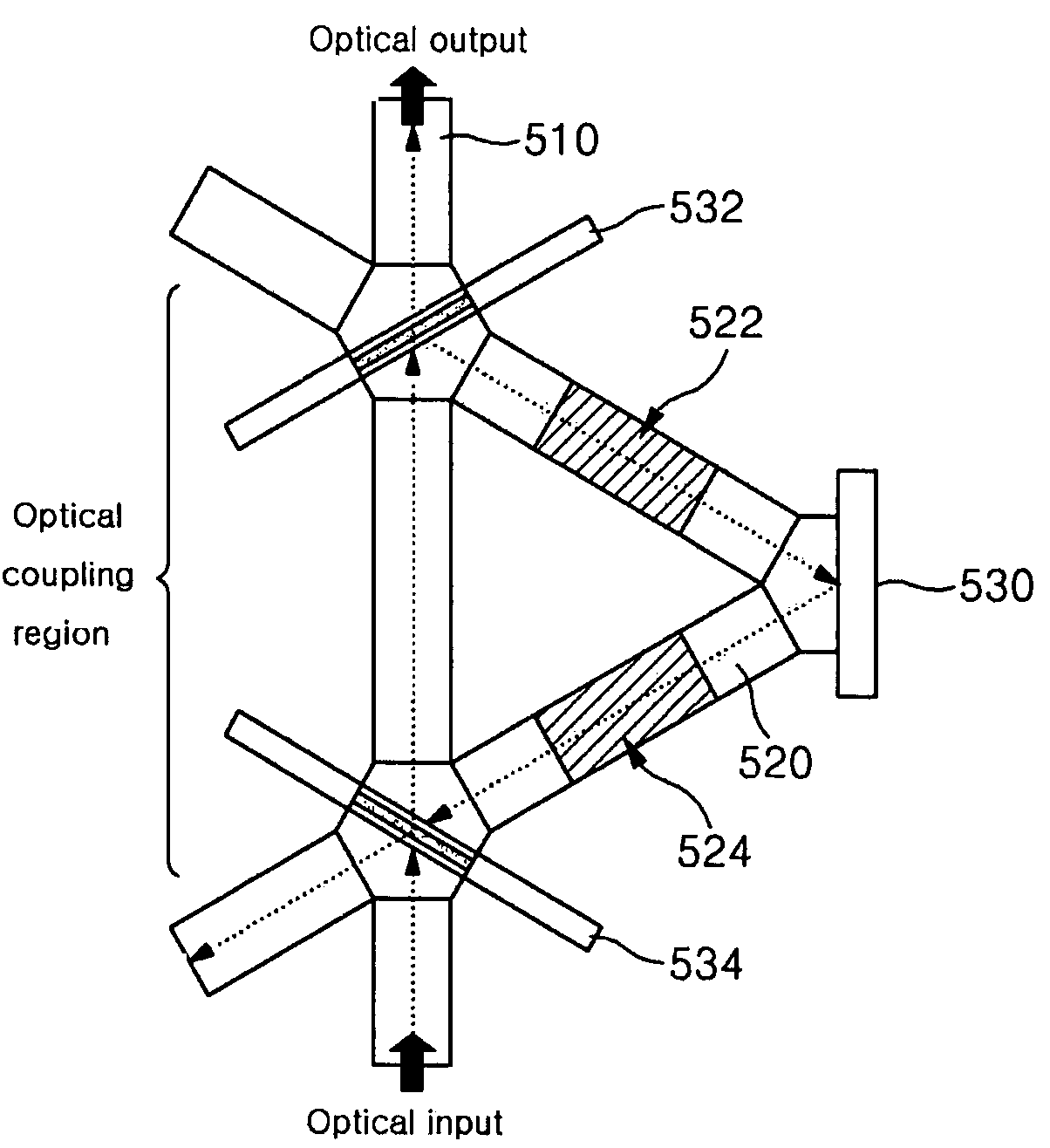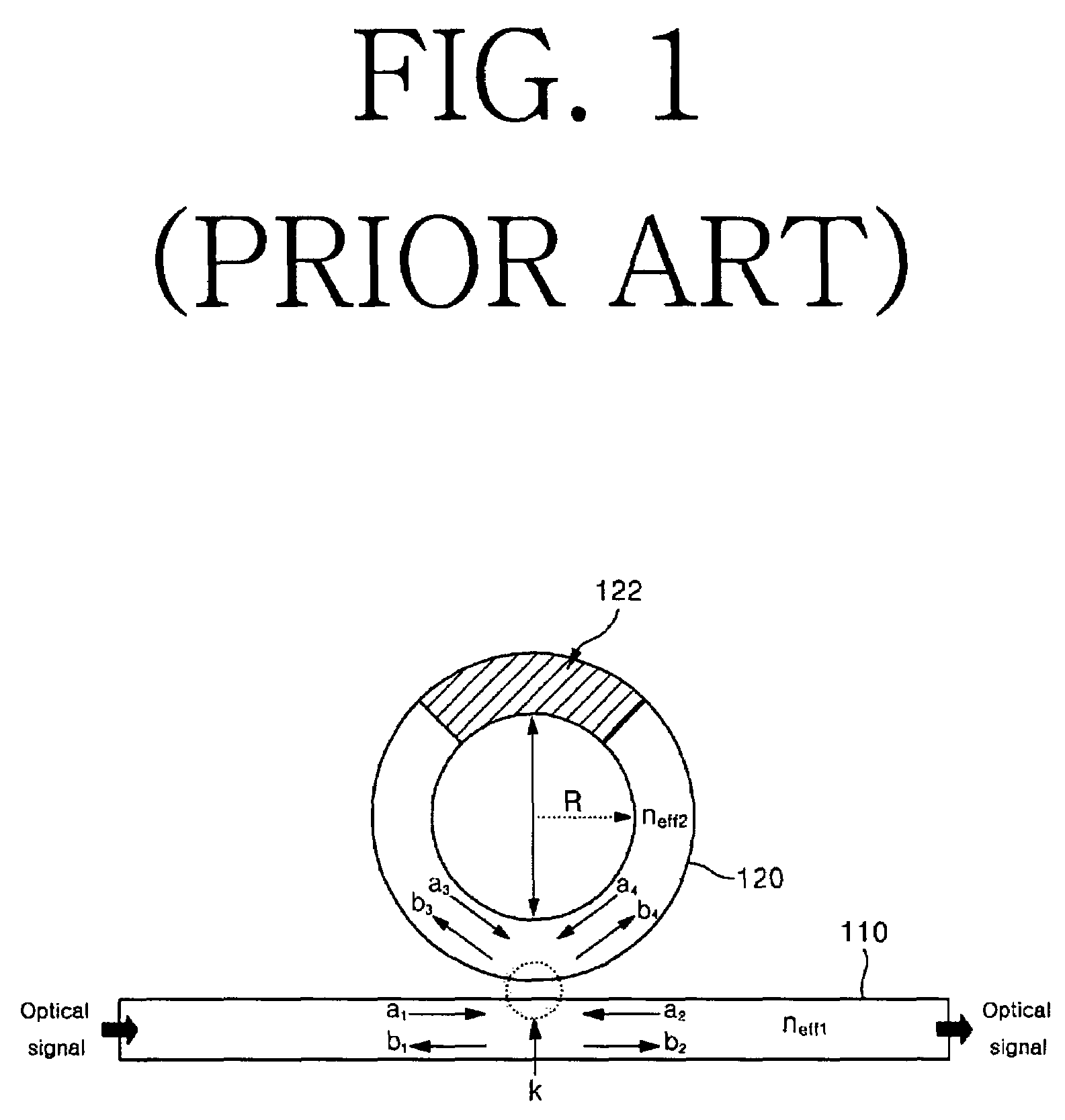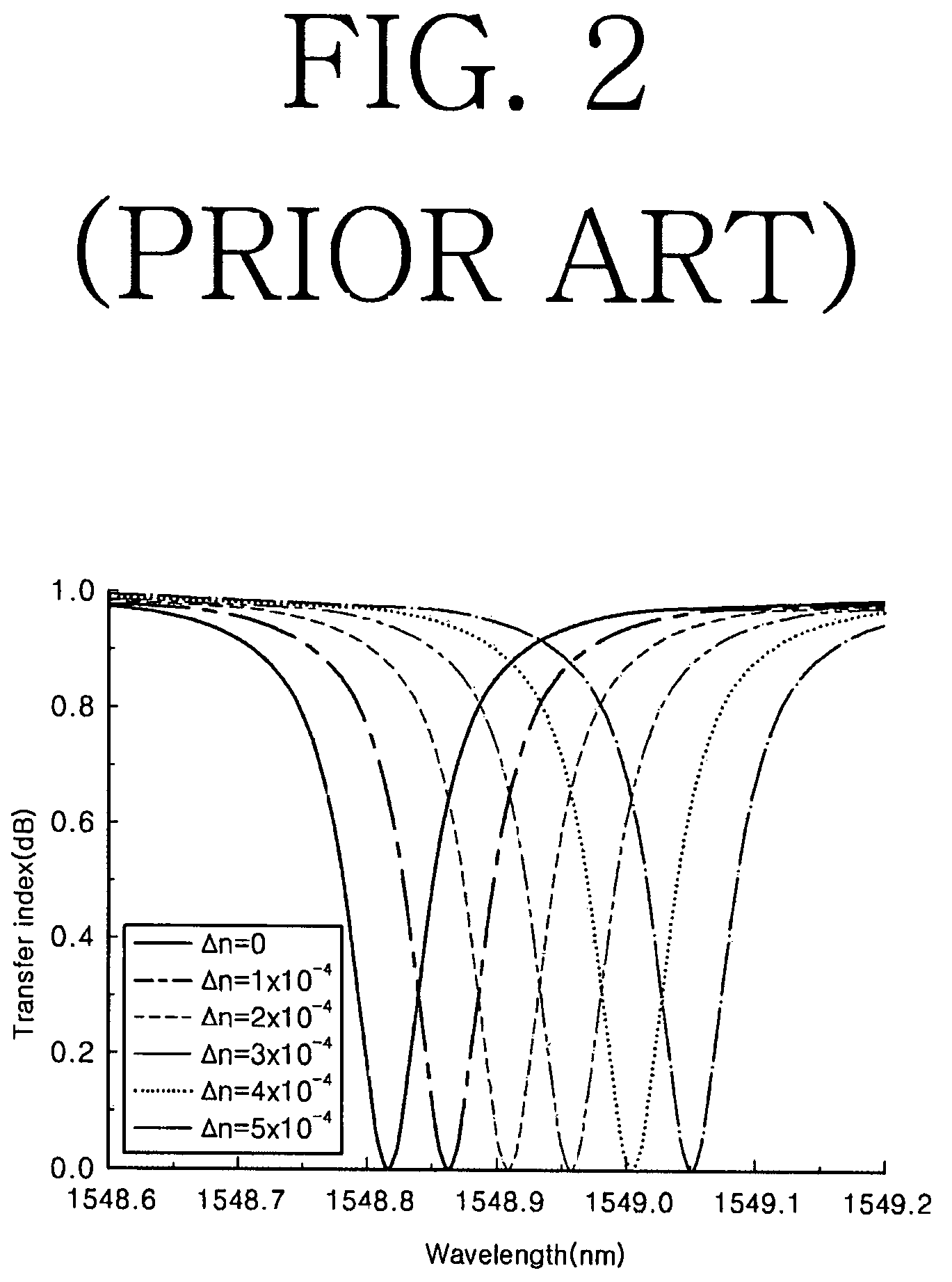Micro resonator sensor
a micro-resonator and sensor technology, applied in the field of micro-resonator sensors, can solve the problems of etching through intrinsic materials, affecting the accuracy of measurement results, and limiting the aspect of miniaturizing the sensor, so as to minimize radiation loss
- Summary
- Abstract
- Description
- Claims
- Application Information
AI Technical Summary
Benefits of technology
Problems solved by technology
Method used
Image
Examples
first embodiment
[0050]FIG. 5 is a view showing the configuration of a micro resonator sensor according to the invention.
[0051]Referring to FIG. 5, the micro resonator sensor according to a first embodiment of the invention comprises a main waveguide 510, a resonance waveguide 520, a total reflection mirror 530, and beam splitters 532 and 534. The main waveguide 510 has an incident hole for receiving an optical signal and an exit hole for outputting an optical signal, and an optical coupling region where an optical signal inputted through the incident hole is coupled to the resonance waveguide 520 is formed at the main waveguide 510. The resonance waveguide 520 has an optical coupling region optically connected to the optical coupling region of the main waveguide 510, for receiving an optical signal coupled to the resonance waveguide 520 (hereinafter, referred to as a split optical signal) among the optical signal inputted through the incident hole of the main waveguide 510 in which a plurality of o...
second embodiment
[0054]FIG. 6 is a view showing the configuration of a micro resonator sensor according to the invention.
[0055]Referring to FIG. 6, the micro resonator sensor according to a second embodiment of the invention comprises a main waveguide 540, a resonance waveguide 550, and total reflection mirrors 560, 562, and 564. The main waveguide 540 has an incident hole for receiving an optical signal and an exit hole for outputting an optical signal, and an optical coupling region where the optical signal inputted through the incident hole is coupled to the resonance waveguide 550 is formed at the main waveguide 540. The resonance waveguide 550 has an optical coupling region optically connected to the optical coupling region of the main waveguide 540, for receiving an optical signal coupled to the resonance waveguide 550 among the optical signal inputted through the incident hole of the main waveguide 540, and a plurality of optical waveguides is arranged in a triangular shape. At this point, on...
third embodiment
[0057]FIG. 7 is a view showing the configuration of a micro resonator sensor according to the invention.
[0058]Referring to FIG. 7, the micro resonator sensor according to a third embodiment of the invention comprises a main waveguide 570, an optical coupler 575, a resonance waveguide 580, and total reflection mirrors 590, 592, 594, and 596. The main waveguide 570 has an incident hole for receiving an optical signal and an exit hole for outputting an optical signal, and an optical coupling region where the optical signal inputted through the incident hole is coupled to the optical coupler 575 is formed at the main waveguide 570. The optical coupler 575 splits the optical signal inputted through the incident hole of the main waveguide 570 to the exit hole of the main waveguide 570 and the resonance waveguide 580. In addition, the optical coupler 575 splits the optical signal that has circulated inside the resonance waveguide 580 to the exit hole of the main waveguide 570 and to the re...
PUM
 Login to View More
Login to View More Abstract
Description
Claims
Application Information
 Login to View More
Login to View More - R&D
- Intellectual Property
- Life Sciences
- Materials
- Tech Scout
- Unparalleled Data Quality
- Higher Quality Content
- 60% Fewer Hallucinations
Browse by: Latest US Patents, China's latest patents, Technical Efficacy Thesaurus, Application Domain, Technology Topic, Popular Technical Reports.
© 2025 PatSnap. All rights reserved.Legal|Privacy policy|Modern Slavery Act Transparency Statement|Sitemap|About US| Contact US: help@patsnap.com



